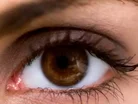Microchips to restore useful vision in RP patients

This year marks the 50th anniversary of the microchip. Aside from being a key component in computers and mobile phones, they have also been used in medicine for a range of purposes, including artificial vision, monitoring and managing illnesses and medical imaging.
One disease area which has benefited from the microchip is retinitis pigmentosa (RP), a degenerative disease that reduces the visual field over a period of years. It affects roughly one in every 3,000 to 4,000 people in the UK alone, making it the leading cause of inherited blindness and often leads to complete loss of vision.
Until recently, there have been few treatments available to RP patients compared with other eye conditions such as age-related macular degeneration. Now, microchips implanted into the retina which restore vision to a functional level,are being explored as a viable option to treat RP.
At present, several clinical trials are underway to investigate retinal implants. There are two main approaches – subretinal and epiretinal. The main difference is the location of the microchip. Subretinal implants are placed below the retina, specifically in the macular region, and perform in-line with the natural processing of images in the human brain. Epiretinal implants are placed right on the retina.
There is a growing consensus that the positioning of subretinal implants, where light-sensitive photoreceptor cells are located, produces better results for patients. Vision is restored as the eye moves allowing for the immediate focus and recognition of objects. The location also allows for superior stability, meaning the chip is unlikely to loosen. These microchips contain considerably more electrodes (1,500 vs 64) improving the contrast between light and dark compared to epiretinal devices.
Leading the way in this discovery is German company and University of Tuebingen spin-off, Retina Implant AG, whose first clinical trial of a battery-powered subretinal implant recorded previously blind patients being able to recognise objects and even reading letters to form words.
Clinical trials of Retina Implant AG’s technology began in 2005 by implanting 11 patients who have RP and the results were published in the Proceedings of the Royal Society B. The implant was left in the eye for three months and patients received training in the optimal way to use the vision they obtained. Even without training, the participants were able to distinguish objects such as windows and cutlery.
Commenting on the study, lead researcher, Professor Eberhart Zrenner, director and chairman, Institute for Ophthalmic Research at University Eye Hospital Tuebingen, said: "The results of this pilot study provide strong evidence that the visual functions of patients blinded by a hereditary retinal dystrophy can, in principle, be restored to a degree sufficient for use in daily life."
The Deus Ex Eyeborg Documentary:
Our magazine is now available on the iPad. Click here to download it.
- Floodwaters pose a significant hazard to public health says Houston Health DepartmentDigital Healthcare
- Pfizer to help raise awareness around infectious diseases in the UAEDigital Healthcare
- Can cellphone tracking slow the spread of MERS in South Korea?Technology & AI
- Why the Samsung Medical Center is not to blame for the spread of MERS diseaseHospitals



